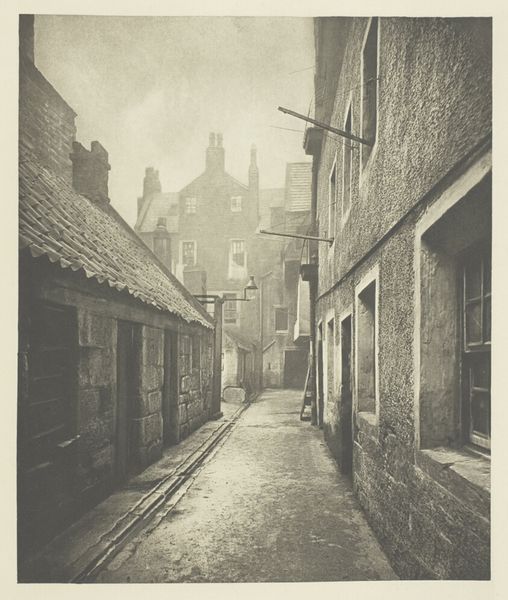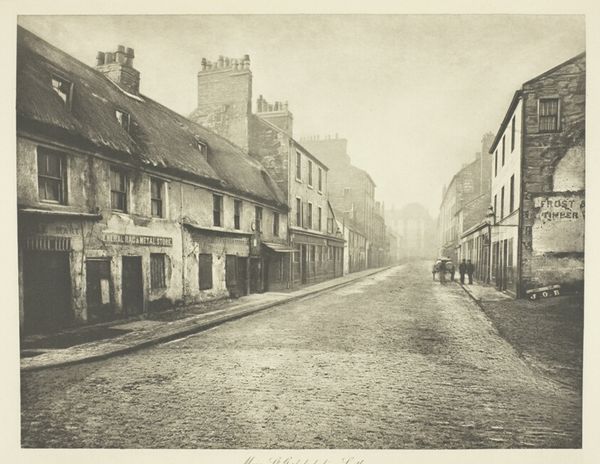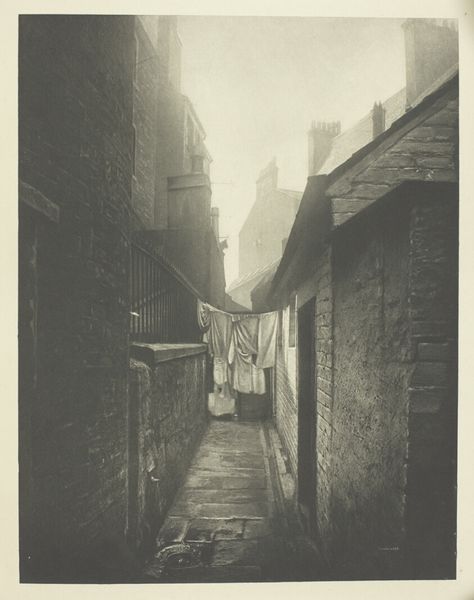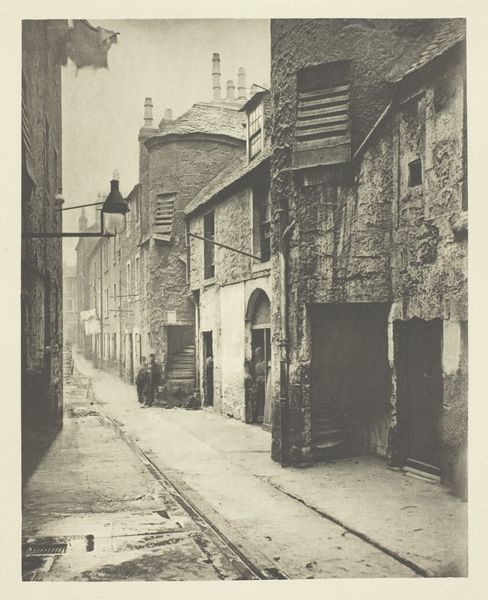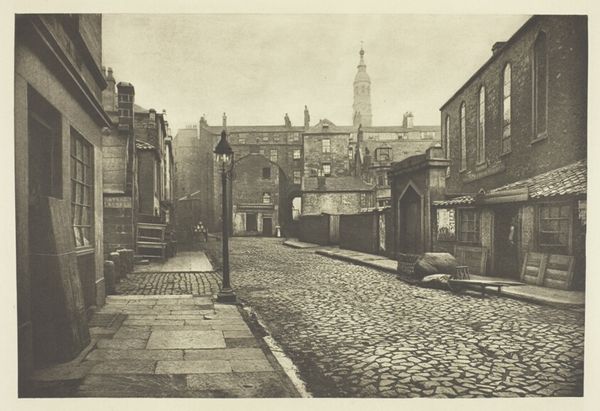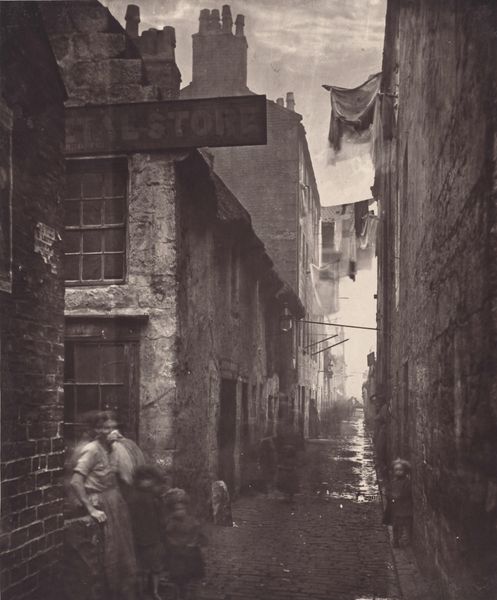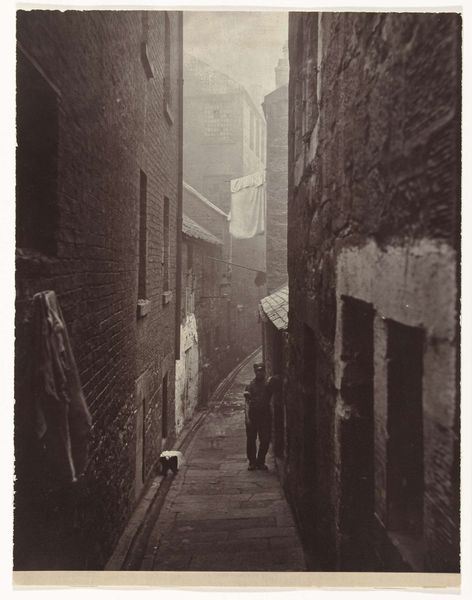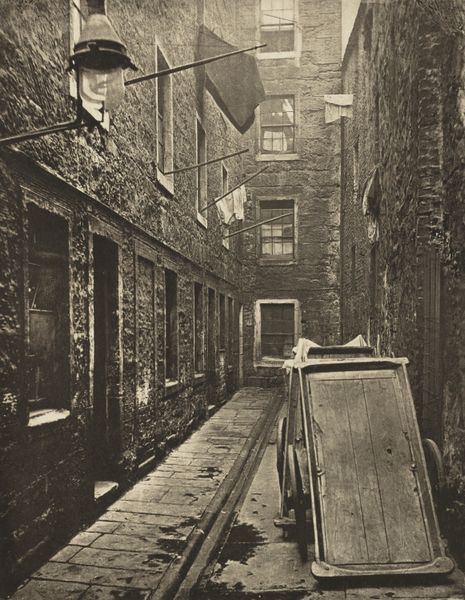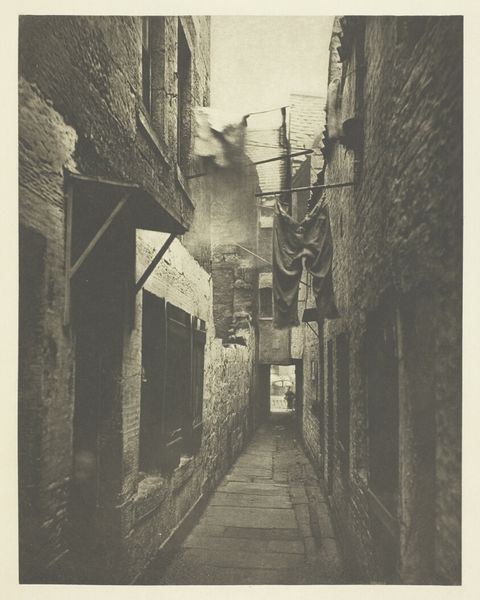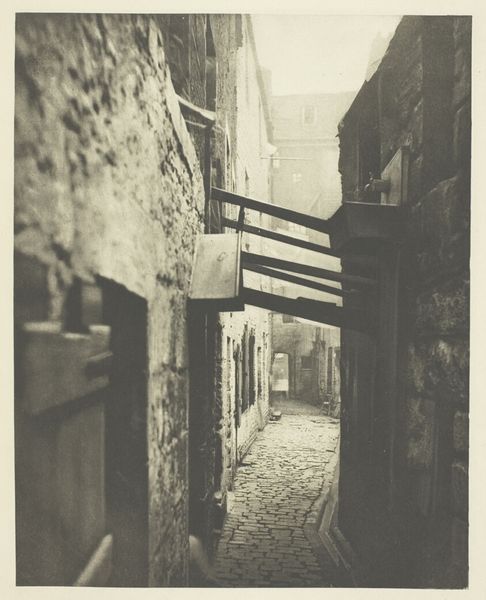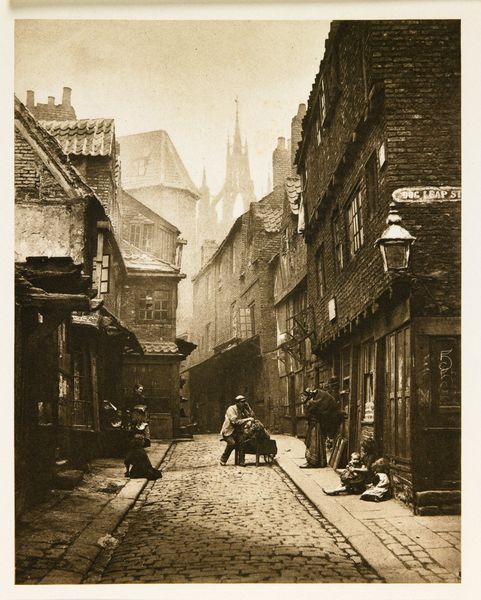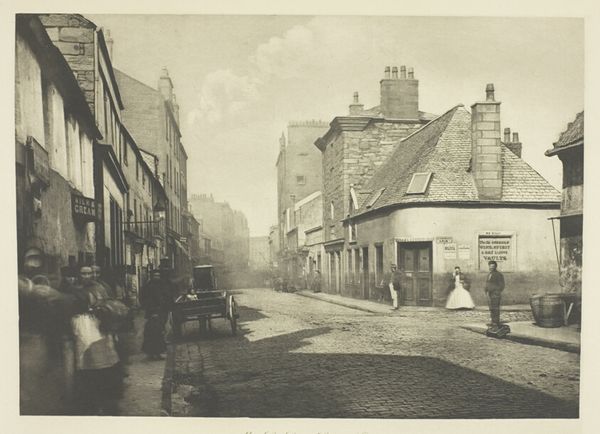
print, photography, albumen-print
# print
#
historic architecture
#
street-photography
#
photography
#
derelict
#
scottish-colorists
#
cityscape
#
albumen-print
#
historical building
Dimensions: height 276 mm, width 223 mm, height 282 mm, width 223 mm
Copyright: Rijks Museum: Open Domain
Curator: Looking at this image, I am struck by a sense of foreboding and neglect. The high contrast gives it a sense of bleakness and urban decay. Editor: We’re looking at a photographic print entitled “Steeg bij High Street in Glasgow” made between 1868 and 1877, attributed to Thomas Annan. The photograph is an albumen print, which explains the rich tonal range you're responding to. Curator: That’s right. The albumen process, it often lends such detail. Notice how the lane itself functions almost as a symbol, a corridor of transition or escape perhaps. It feels charged, psychologically. Editor: It’s interesting you interpret the lane in that way. I see it as a documentation of the period's social landscape and urban planning policies. Annan was commissioned to document the slums of Glasgow before they were demolished. Curator: Ah, so it serves as a memorial as well? That’s deeply compelling. A recording of an underclass, caught in this moment between visibility and oblivion, it gives off the feeling of liminal space and abandonment. Look at the single cloth hanging in the windows! Editor: Indeed, this image became crucial visual evidence, advocating for urban renewal and reform. But look closely at the building materials. You see the heavy, dark stone? This suggests durability. However derelict it looks, this space was also quite resistant to change. Curator: But that resistance becomes another layer of meaning, doesn’t it? Symbolically it shows us of how urban decay digs itself in deep, the way collective despair can become inscribed within physical spaces and shapes social destiny. Editor: And Annan’s skill captured this paradox with haunting clarity, didn’t he? It's a powerful testament to both the past and our capacity to reimagine our shared environment. Curator: Absolutely, seeing it through the lenses of reform makes it so much more resonant and powerful, shifting our understanding of city spaces and memory. Editor: Thank you, it has been insightful discussing it from an iconographical point of view too.
Comments
No comments
Be the first to comment and join the conversation on the ultimate creative platform.
